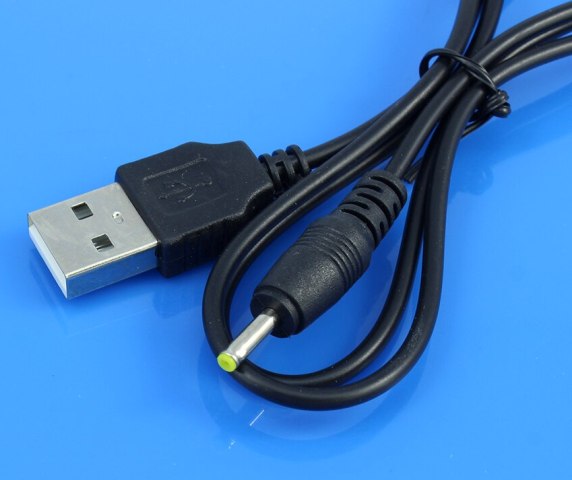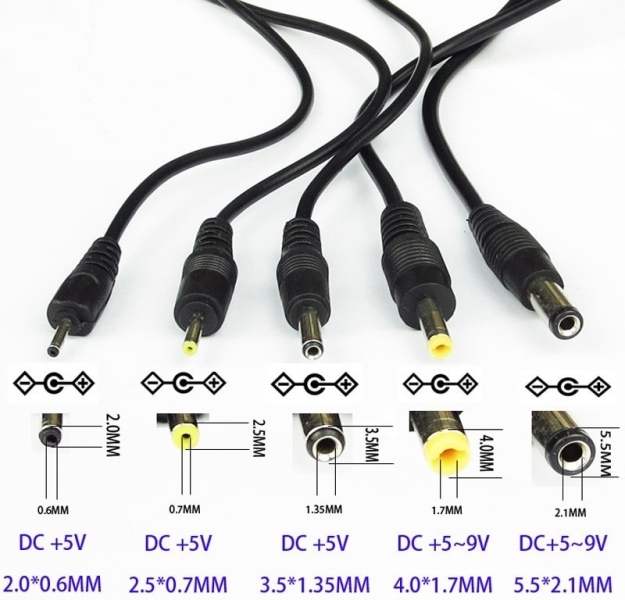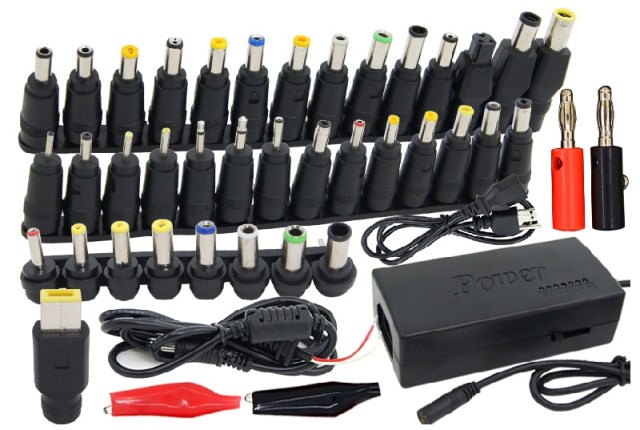Categories: Electrical Reviews
Number of views: 9431
Comments on the article: 0
Pin Power Connectors - Basic Types and Sizes
Pin power connectors are widely used today to connect external power supplies to various devices: electronic medical devices, table fans and lamps, chargers, portable speakers, etc.

In many devices, having a built-in power supply is simply not convenient, and therefore it is made external, which is sometimes much more practical. In addition, one power supply can be used for alternate use with several different devices, since the pin connectors have a unified format.

Assembled, this connector consists of a plug and socket. The plug itself includes two parts: a plastic case and a cylindrical contact with a pair of terminals for soldering the wire coming from the power supply. The conclusions for fastening the wire can be made not only for soldering, but also in the form of a terminal block.

The socket of the connector, as the name implies, has a pin and its own housing, which is attached and soldered in the appropriate manner to the connector. The socket also has solder pins. Pin connectors are metal and plastic.
Types and Sizes
In general, the pin connectors are available in the following six versions: on cable (for soldering), with terminal block on cable, on cable at right angles, on cable with shock absorber, on board, on block. For any electronic device, the connector design is selected individually, depending on the operating conditions, the shape of the case, the type of cable, the purpose of the device, etc.

Pin power connectors are available:
-
with a pin length of 6, 9, 10, 13 and 14 mm;
-
with an internal pin diameter of 0.6 0.7, 1, 1.2, 1.3, 1.35 1.7 2, 2.1, 2.5 and 3.1 mm;
-
with an external diameter of the plug 2.0, 2.5, 3.3, 3.4, 3.5, 3.6, 4.0 4.3, 5.5, 6 and 6.3 mm.

The choice of connector by diameter is based on the purpose of the device, supply voltage, operating current, operating conditions.
The power connectors “per cable at right angles” differ in that the power pin is located at an angle of 90 degrees to the power cable. This solution is convenient if there is limited space for the device and cable.
The “cable with shock absorber” connectors have a plastic or metal shank to protect the cable from kinks. This type of protection is useful when the cable loosens freely during normal use.
Power connectors on the board are designed to be mounted directly on the board and can have round or flat contacts for soldering. The connectors on the board are most often found on household equipment with external power supplies.

Connectors "on the block" are installed directly on the device. In this case, the socket is mounted in a hole previously made for it, and can be fixed to the housing with screws or nuts. This type of connector is used in cases with a large internal volume or where special isolation of the connector from other internal parts and circuit boards of the device is required.
The pin power connectors have the following characteristics. The current limit is 2 amperes. Operating voltage - up to 250 volts. Insulation resistance - not less than 50 megohms. Contact resistance - not more than 0.02 ohms. Connectors of this type can be used in the temperature range from -25 to +85 ° C.
In connection with the miniaturization of electronic equipment, pin connectors are used in almost all modern devices with an external power source.
See also at bgv.electricianexp.com
:
